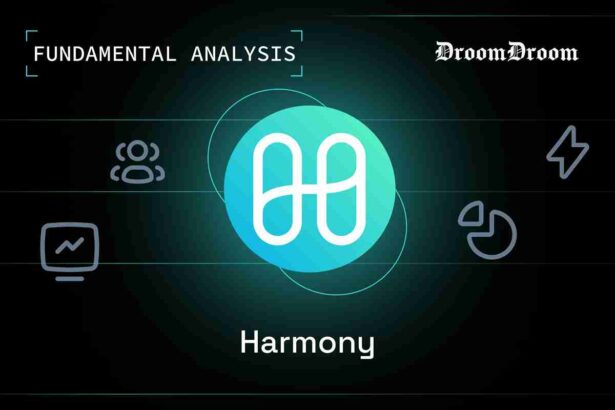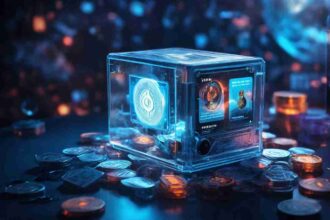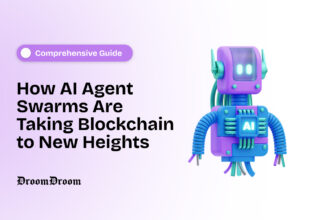The efforts of Harmony to solve the trilemma that is synonymous with most blockchain networks have showered the project with attention from developers, investors, and the crypto community at large. Despite the growing popularity of this project, Harmony is yet to get a full analysis that’ll further illuminate some key details about it. In this piece, investors, developers, and crypto enthusiasts will get enough background information about the Harmony network.
Harmony is designed to provide solutions to the trilemma of blockchain by enhancing its decentralization, security, and scalability. The network boasts of having a 2,000 TPS strength, making it ideal for DApps developers. The project is facing stern competition from Ethereum, Solana, Fantom, and SingularityNet.
Summary of Harmony White Paper
Harmony is a decentralized blockchain system structured to support the designing and implementation of decentralized applications (DApps). Harmony pursues the advancement of the basic functions of DApps by concentrating on random state sharding that facilitates the creation of blocks within seconds. Further, the project intends to usher in a self-sustainable environment that aids users to design markets for fungible and non-fungible tokens.
Harmony encourages developers to implement its provided tools and benefit from interoperability and scalability via sharding. Founded in 2017, Harmony processes transactions almost “instantly” due to its transition throughputs which are higher than Ethereum’s and its counterparts.
Worth mentioning that the present capacity of the network can see it process about 2,000 transactions per second (TPS) which makes it faster than some prominent networks. Its sharding system facilitates the addition of 500 TPS to the network for every shard. Part of its future plans include the increment of its network capacity to process transactions to 1 million TPS. To achieve this goal, Harmony aims to increase its shards to 2,000.
Additionally, Harmony is based on the Ethereum network, thus, making the project focus on solving issues limiting the Ecosystem. The network is Ethereum Virtual Machine (EVM) compatible, aiding developers on the Ethereum network to migrate their projects to Harmony.
The ONE is a native token to Harmony which is instrumental to the smooth running of the network. The token has a variety of uses that extend outside the Harmony network. Subsequently, a part of this piece will illuminate the uses of ONE, its relevance, and market performance.
More so, investors can earn passively on the network by staking ONE to gain a return of 3.5%. Harmony charges one of the lowest entry fees for becoming a validator on its network. To become a validator, one must stake about 10,000 ONE which is relatively cheap compared to some of its rivals.
Team Members And Their Background
A background check into the founding team of Harmony pointed to how the team is well-grounded with working experience in cryptography and computer program. This background knowledge aided the team to bring scaling and interoperability to DApps projects. Initially, a team of 12 members founded Harmony in 2017, and most of the team had held various positions at Microsoft, Google, Apple, and Amazon prior to the establishment of the network.
Leading this team of developers are Dr. Stephen Tse, Nick White, and Rongjian Lun. Dr. Stephen Tse is widely attributed with the creation of Harmony and he’s presently the CEO of the project. Also, Nick White is a co-founder that’s widely known in the Harmony community for his activeness and contribution to the community. Dr. Tse had previous stints at Google, Apple, and Microsoft as an engineer.
Further findings into the educational background of Dr. Stephen Tse revealed how he got a Ph.D. from the University of Pennsylvania, with a discipline in cryptographic protocols and type theory. Upon the completion of his degree, he worked as a research intern at Microsoft before moving to Google in 2006. In 2011, Dr. Tse founded a search engine; Spotsetter which was later acquired by Apple on June 6, 2014 for $10 million. Three (3) years later, he became the principal engineer for Apple.
Market Metrics of ONE
Considering the overall market performance of the token, ONE is doing relatively well. However, on a yearly basis, the token recorded a negative ROI in 2019 and 2020 respectively. In both years, the coin recorded a negative ROI of 12.51% and 80.71% according to market data provided by Messari. Despite the poor performance in the previous years, the coin recorded its all-time high of $0.379 on October 26, 2021. Overall, the ROI of the token is presently at 535.31%.
More so, things turned out for good for ONE in 2021 during the crypto boom. As earlier stated, the coin attained its all-time high setting a pace for more price improvement. The coin suffered setbacks at the height of the 2022 bear market that saw it plunge as low as $0.01015 in December. Coupled with the bear market, Harmony became a victim of an exploit on its Horizon bridge in the same year.
Tokenomics
Under this section, there will be a focus on the tokenomics of the ONE coin. Worth mentioning that tokenomics refer to the economic and financial attributes of a crypto asset that spread across its supply, distribution system, use cases, value, market capitalization, and many others. The tokenomics of ONE the native token to the Harmony network are as follows:
- Price: $0.02024
- Market Dominance: 0.02%
- Market cap: $266,548,576
- Fully diluted market cap: $280,190,750
- All-time high: $0.3798
- All-time low: $0.001257
- Market Rank: 133
- Maximum Supply: Unknown
- Total Supply: 13,838,024,307 ONE
- Circulating Supply: 13,167,749,307 ONE
- TVL: $4,289,829
Distribution:
The distribution system of ONE set aside 22.4 of its total supply for the initial seed sale. About 12.5% went to the launchpad sale while the founding team and developers were rewarded with 16.9% of the coin’s total supply. Likewise, 26.4% of the token were set aside for the development of its protocol. Lastly, 21.8% of ONE went to the future development of the Harmony Ecosystem.
Use cases:
ONE as the native coin of the Harmony network can be utilized in numerous ways. The token powers the network in different ways such that it can be used in the network governance to permit holders in participating in the voting process regarding a proposal on Harmony. The network uses the coin as a gateway for validators who must stake a certain amount of ONE becoming joining the network.
Also, ONE is used by the network to incentivize network participant who is working for validation and the security of the network. Another use case for the token is payment for gas fees, transactions, and storage fees on the Harmony network.
Meanwhile, investors can buy the token and keep it in their wallets as a long-term investment with the intention of waiting till it acquires more value. Lastly, ONE is tradable in the crypto market. On a short-term plan, holders can attempt to make gains based on the difference between the purchase and selling prices initiated by market trends.
Competition
- SingularityNET: Like Harmony Network, SingularityNET also provides support for developers aiding them to create, market, and trade AI services. The platform ensures that developers have needed tools that will facilitate the seamless development of their services at their disposal.
- Ethereum: Ethereum is structured to design DApps, build smart contracts and facilitate regular peer-to-peer transactions. With the recent switch to the Proof-of-Stake consensus algorithm, the network now has a 100,000 TPS strength.
- Solana: Solana is an open-source blockchain that provides an enabling environment for the creation of DeFi solutions. The project focuses on the improvement of blockchain scalability by initiating an innovative combination of Proof-of-History (PoH) consensus with underlying support from the Proof-of-Stake consensus mechanism. With these features, Solana has attracted wide range of attention from developers, making it one of the largest DeFi ecosystem.
- Fantom: Fantom, in its own dimension also offers support for developers. Regarding its support for Developers, the platform provides a variety of tools to help the integration of existing DApps in a seamless way. The protocol is a directed acyclic graph smart contract providing DeFi services for developers via its bespoke consensus algorithm. The platform is meant to serve as an alternative to the Ethereum network. Fantom focuses on scalability, security, and decentralization as well.
Future of ONE
In 2022, we saw the network’s effort in becoming a prominent blockchain for cross-chain assets, governance, and identity. During the year, the project enhanced its utility by adding more developers to its ecosystem and engaging in new collaborations. Likewise, efforts on interoperability saw the project bridge with Ethereum and Bitcoin.
These efforts were aimed at laying the foundation for Harmony’s focus on scaling the Web3 infrastructure of DeFi and NFTs by 2026. According to its road map, the project is focused on adding Zero-Knowledge Proofs to production and decentralizing governance via numerous DAOs. This move will further enhance the chances of the project’s success in the long run.
Meanwhile, considering the low network fees, scalability, speed, security, cross-chain, and energy-saving features of the platform, Harmony has been attracting a host of attention of late. This attention has boosted the project’s status at the mainstream of the crypto market. Accordingly, it has reflected in the recent market performance of ONE.
Overall, Harmony is committed to its mission of creating a self-sustaining, decentralized platform.
Open access is a key component in creating a decentralized community. 💙
— Harmony 💙 (@harmonyprotocol) March 7, 2023From a positive view, Harmony has developed various innovations that can aid its success and wide range of acceptance, which in a long run will prove decisive in the future of its native token. Some of these innovations include the process of random state sharding and its Proof-of-Stake consensus mechanism.
However, being a utility coin to a network has been a major limitation against ONE. The struggles of the project to prosper in meeting the demands of investors will go a long way to having a negative impact on the token. Therefore, the future of the ONE lies sorely in the success of the Harmony network.
Recently, ONE has shown some impressive price movement that points to a positive future for the token, maybe in the short term. Since the start of the year, the coin has surged in value by 104%. Also, the coin has a 535.31% ROI which is another positive pointer to a prosperous future. Nevertheless, ONE isn’t immune to the general volatility of crypto assets, therefore, blurring any assuring pointer about its future.
Drawback and Weaknesses
In this aspect, one of the major drawbacks against ONE is the growing attention on its rivals of late. The crypto market is a large one with a host of tokens and projects, leaving investors with various appealing options. Investors will prefer to invest in projects with high chances of success, a category which Harmony and its native token fall into.
Nevertheless, there are other promising projects with huge chances of prosperity that can sway investors attention from the project under review. For instance, Ethereum has worked on most of the solutions the network is trying to proffer. The market popularity of Ethereum has placed it in a better position of gaining more market attention than Harmony.
Also, ONE is mainly a utility token which limits its adoption majorly to its platform. The larger portion of those holding the coin are community members and other few investors outside its ecosystem.
So far, the project suffered its biggest setback on June 24, 2022, when hackers exploited the Harmony Horizon Bridge, stealing altcoins worth $100 million. According to findings, the hacker exploited the bridge after compromising two of the network’s validator nodes. Though, a combined effort of Binance and Huobi reclaimed a part of the stolen funds. Nonetheless, the attack birthed questions about the security of the platform.
1/ The Harmony team has identified a theft occurring this morning on the Horizon bridge amounting to approx. $100MM. We have begun working with national authorities and forensic specialists to identify the culprit and retrieve the stolen funds.
More 🧵
— Harmony 💙 (@harmonyprotocol) June 23, 2022Our Takeaway
So far, Harmony network is posing to be an exciting project, offering solutions to the trilemma of the blockchain. The antecedents of its founding team established that indeed the project has enough talents to equip it with the needed support to strive. The market performance of its native token is also a positive takeaway. Though, the project is struggling to gain more relevance in the market due to stern competition.
Considering the recent price run of ONE, investors can gear up for more price rallies as most tokens are responding to the recent price surge of BTC. By the sideways, you can read this article to learn more about how top AI tokens have reacted to the recent price rally of BTC. Lastly, the project must continue to improve its system from time to time in a bid to maintain a lead over its rivals or at worst close the gap between them.



















